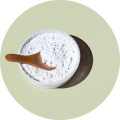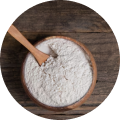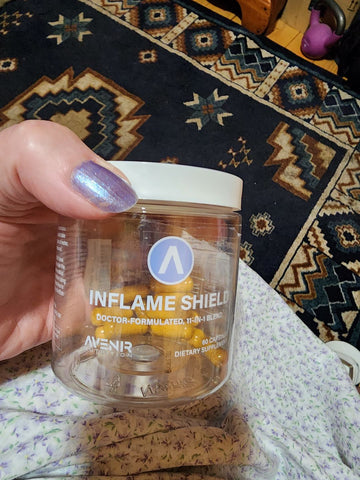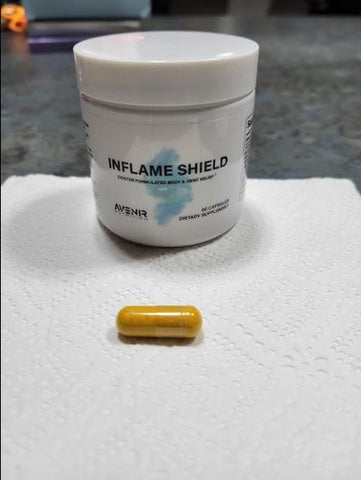YOUR 60 DAY JOURNEY TO INFLAMMATION RELIEF
-
DAY 1: SETTING THE FOUNDATION
Begin with 1-2 capsules. Lay the groundwork for upcoming relief.
-
DAY 5: EARLY RELIEF BEGINS
In just days, sense the first improvements and diminishing discomfort.
-
DAY 15: RECLAIMING MOVEMENT
Mid-month, aches subside, and mobility flourishes.
-
DAY 30: COMPLETE BENEFITS
The full effects kicks in, reducing inflammation and enhancing well-being.
-
DAY 60+: LONG-TERM RELIEF
Stay consistent for continued relief and to keep inflammation at bay.
Live Life Without Aches & Pains 🤝
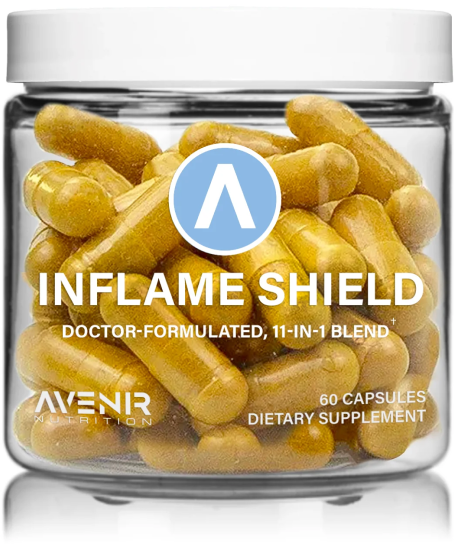
-
SYNERGY OF NATURE'S BEST 🪴
Our formula, with boswellia, glucosamine, MSM, etc., is a powerhouse of anti-inflammatories
-
CARTILAGE AND JOINT SUPPORT 🙂
Featuring chondroitin and glucosamine, improves joint health, cartilage strength, and function
-
PURITY IN EVERY DOSE 🙏
Inflame Shield harnesses nature's strength with pure, natural ingredients for inflammation relief.
-
THE SCIENCE OF NATURAL RELIEF 🤓
Choose Inflame Shield for natural, side-effect-free relief, the peak of anti-inflammatory solutions.
-
TURMERIC & GINGER 💪
Turmeric and ginger offer anti-inflammatory relief, addressing discomfort at its source
-
MOVEMENT REIMAGINED 🏃♀️
By week 2, Inflame Shield boosts joint flexibility and eases aches, making every step more comfortable.
Try Risk-Free For Only
$29.99
All-Natural Ingredients
Inflame Shield is packed with comprehensive and potent blend of herbs and botanicals
Try Risk-Free Today 🤝
We put your satisfaction at the heart of everything we do
money-back guarantee
If our supplements don’t satisfy you, we’ll give you a full refund.
Thousands of Customers
People love our products! Check out our reviews to see for yourself.
FREE & FASTING SHIPPING
Shipping is always free, and your order will reach you inside 2-4 days

Inflammation Support🌿
Crafted from a blend of powerful herbs and minerals, Inflame Shield offers a complete solution to inflammation management

Relieve Aches & Pains 😊
Don't let joint pain dictate your daily activities. Alleviate discomfort and fortify your joints for the future

Improve Movement & Mobility 🏃♀️
With consistent use, you can look forward to smoother strides and easier movements in day-to-day activities.
Your Satisfaction, Guaranteed
All our nutraceuticals are returnable (no questions asked), so you can shop with confidence.
Avenir is dedicated to customer satisfaction. If you have questions or concerns, drop us a line. We’re here to help.
Physician-Created. Research -Backed. Quality-Assured.
Get a powerful health boost with nutraceuticals you can rely on.
-

superior ingredients
Avenir’s products are all rigorously lab-tested for potency and purity
-

superior sourcing
Our proprietary formulations blend the highest-quality ingredients from around the world.
-

SUPERIOR SATISFACTION
See real results, or your money back (no questions asked)!
The Avenir Difference
Here’s why you should choose Inflame Shield over other supplements
- Doctor-Made
- Clinically-Proven
- Superior Ingredients
- Safe & Effective
- Cost Per Serving

Others
See what everyone is saying about Inflame Shield
Check out all the buzz!
FAQs
Need more info? Find what you’re looking for here!
Inflame Shield is a natural supplement designed to combat inflammation, promote joint health, relieve aches, and improve movement and mobility.
For optimal results, take 2 capsules of Inflame Shield once daily, 30 minutes before eating, accompanied by an 8 oz glass of water. It's also recommended to drink lots of water & veggie juice, avoid processed & fried foods, and exercise daily.
Inflame Shield contains Turmeric, Glucosamine, Ginger, Boswellia, Chondroitin, MSM, Quercetin, Bromelain, and L-Methionine, among other beneficial ingredients.
Users can start to notice results within as little as 5 days of consistent use. Full benefits are typically experienced around 30 days, with continued use recommended for long-term relief.
Where is Inflame Shield shipped from?
Inflame Shield stands out due to its physician-created formula, clinical proof, superior ingredients, safety, and effectiveness. Unlike many other supplements, it does not come with a high cost.
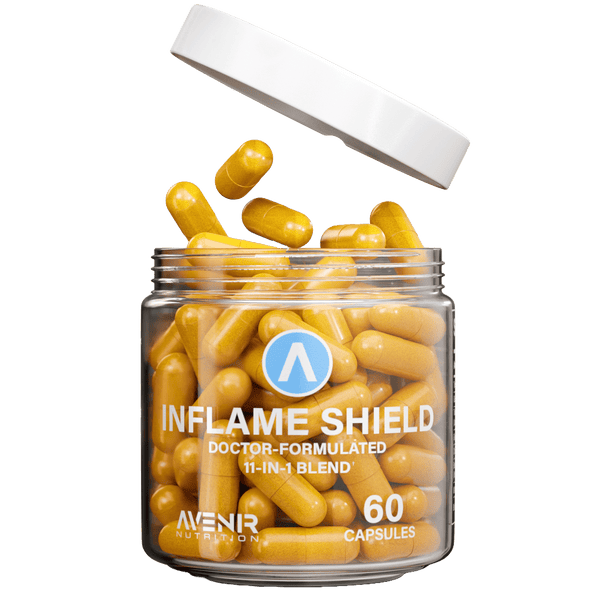
Improve Your Joint Health Today!
Free 2~4 Day Shipping from USA
“Wonderful. Just starting using it but I feel so much better and the pain is markedly reduced from back and sciatica. Worked better than Ibruprofen and Tylenol”




















